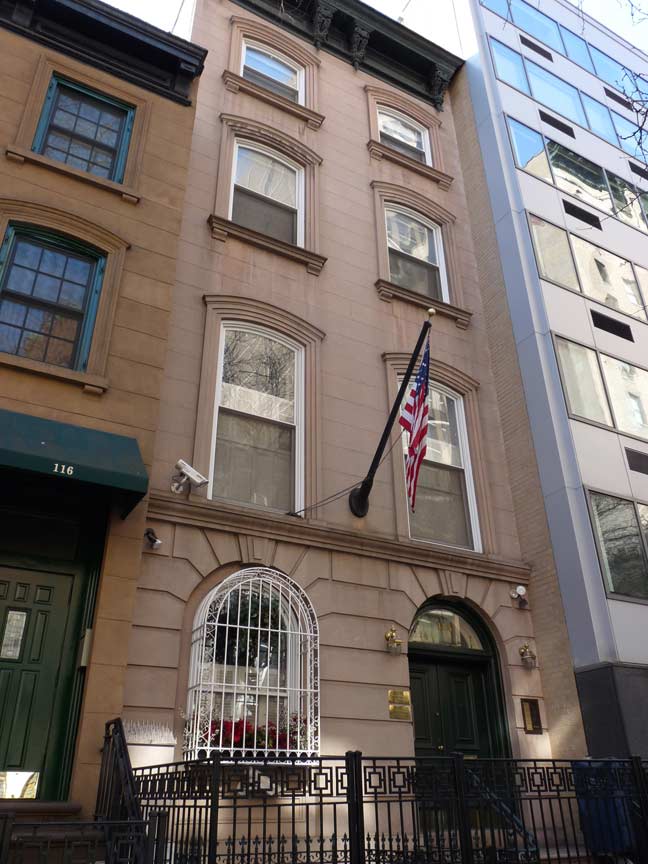
After finding once again, to my chagrin, that Press on East 23rd Street is closed on weekends, I resolved to get a bite later on and marched up Park Avenue South to Grand Central Terminal on a recent Saturday. In my recent wanderings, I’ve noticed that I haven’t paid nearly as much attention to side streets as I should and decided to change my strategy. I’d go up an avenue but glance down a side street on the side of the avenue I’m on to see if anything catches my eye. Upon reaching Murray Hill, as it turns out, there’s plenty to attract you, if you like handsome attached townhouses that I’d have trouble affording even with a Mega Millions win.
Sometimes you find something that takes your mind off what you can and can’t afford. 114 East 30th Street is a narrow brownstone townhouse with an American flag prominently displayed on the second floor. Probably a consulate associated with the United Nations, I thought. Well, the house does have something to do with international relations, but it has nothing to do with the UN.
Instead it was where an extraordinary person with a singular passion executed some breakthrough research and published the result. John P. Clay (1934-2013) was born in Paterson, NJ, and obtained a scholarship at Oxford University in Britain to study Sanskrit, the ancient language of the Indian subcontinent, as well as Old Persian and Avestan, the language of the Zoroastrian scripture. Clay went on to serve in the Royal Canadian Air Force, exploring the Arctic, and then settled down as a stockbroker in the London firm Vickers da Costa for the next 25 years. Moving to NYC in 1982, he founded an investment firm, Clay Finlay, Inc.
In the 1990s, Clay returned to his original passion, Sanskrit, and founded the Clay Sanskrit Library, whose purpose was to translate the great Sanskrit works of antiquity such as the Maha·bhárata and the Ramáyana, as well as two millennia’s worth of plays, poetry, drama, and novels into English and make them available to scholars. While the first edition appeared in 2005, to date a total of 56 have been published, all in recognizable teal-colored covers. Each book is set up the same, with the work in Sanskrit (using Roman characters) on the left side, and the English translation on the right side.
114 East 30th was the home of John P. Clay and his wife, Jennifer, during their time in NYC and he founded the Clay Sanskrit Library here. It’s not a lending library, but volumes of the CSL, as it’s popularly known, can be purchased at its website.
2/6/16